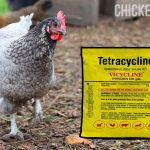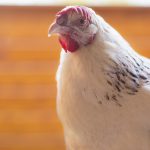Water Belly in Chickens: Symptoms & Treatment of Ascites
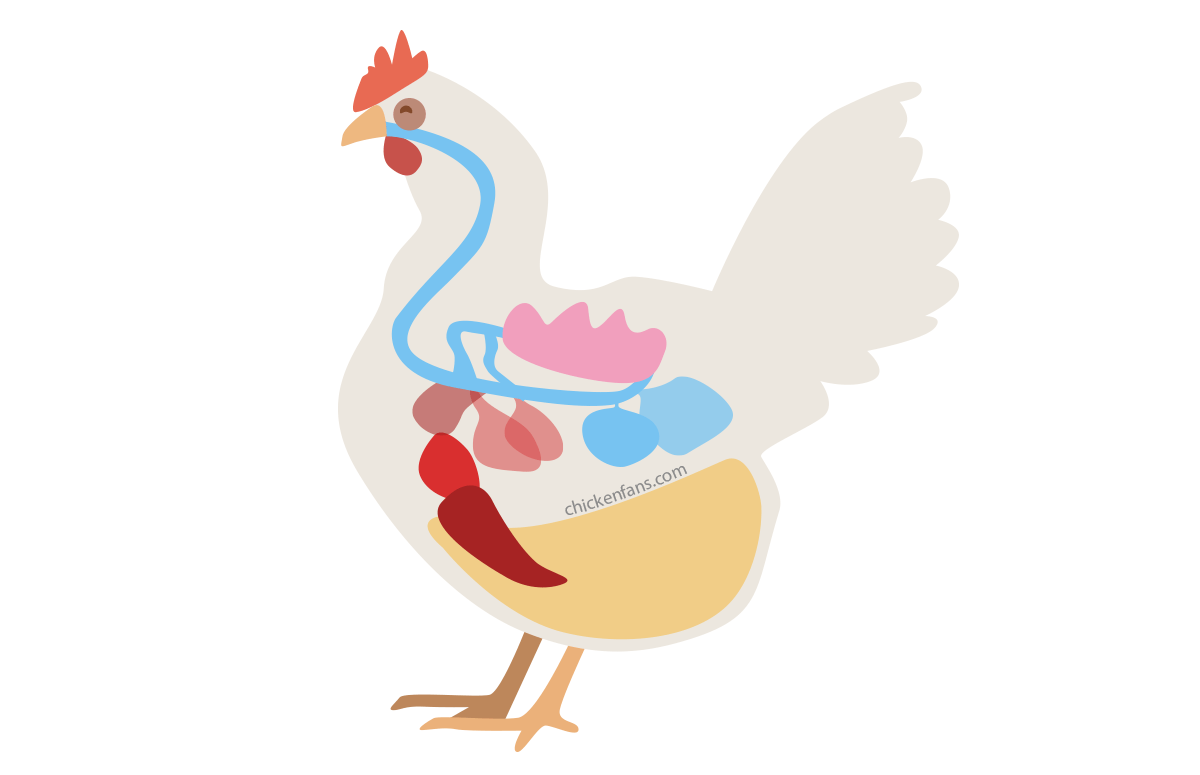
Water belly or Ascites is a serious condition where a chicken has a squishy, swollen belly full of liquid. It affects millions of broilers and meat chickens every year. It’s heartbreaking to see your chicken lying on the ground with a belly like a balloon, faintly clucking with gurgling sounds.
But what exactly is water belly? Why is it such a pressing issue in the poultry industry? And how can you treat a backyard chicken that’s waddling in the run?
Let’s see.
What is Water Belly (Ascites) in Chickens?
Water belly in chickens is a serious condition where an accumulation of body fluid in the abdominal cavity causes the belly to swell. The chicken’s heart can’t cope with its rapid growth, and increased blood pressure causes fluids to leak into the belly (ascites) and lungs, which can be fatal.
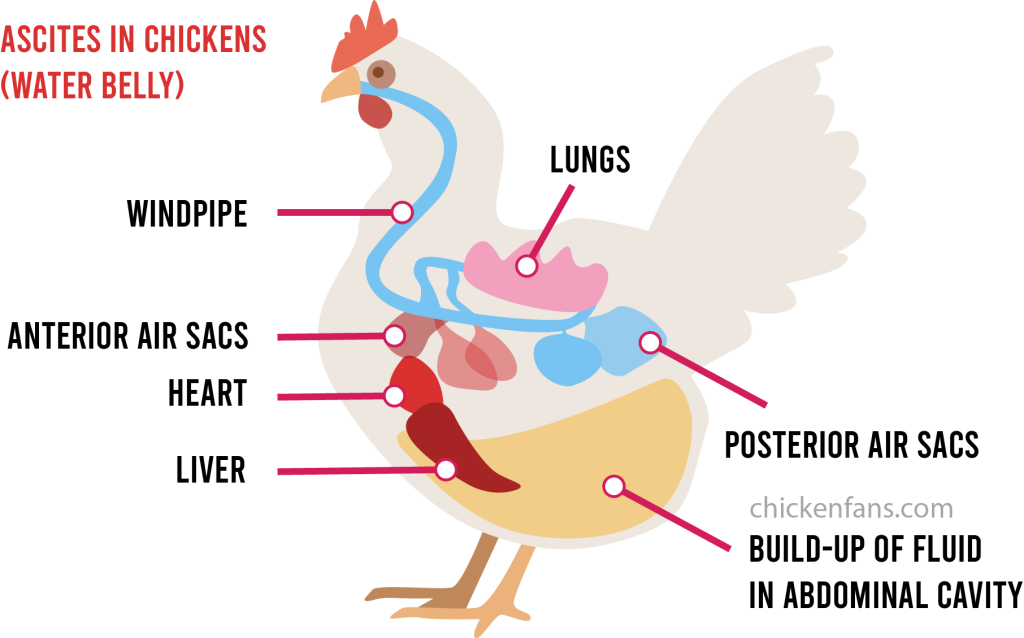
The condition is a massive problem in commercial broilers but is less common in backyard chicken flocks. You can encounter ascites when raising fast-growing meat chickens that are related or similar to broiler breeds.
Symptoms of Water Belly (Ascites) in Chickens?
The most obvious and well-known symptom is the enlarged belly of a chicken. However, symptoms are diverse since it’s both a heart condition and a build-up of fluid in the abdominal cavity and lungs.
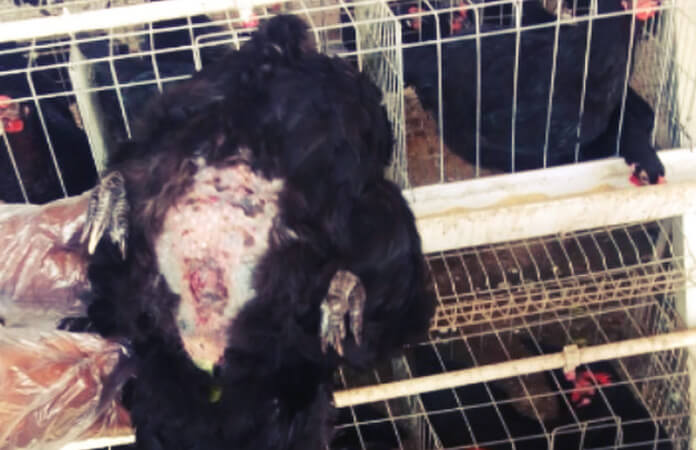
Symptoms of water belly in chickens include:
- distended, swollen belly, squishy and full of liquid
- difficulty breathing, panting, gurgling sounds, shortness of breath
- pale, blue, or purple comb
- red belly skin and missing feathers
- impaired growth
- penguin stand
- lethargy
- acute death
Causes of Water Belly
Water belly or ascites is a condition that develops when a chicken grows. It is not an infection caused by viruses, bacteria, or other pathogens. The fluid in the belly is a symptom of the condition.
Risk factors for ascites:
- Genetics: selective breeding for bigger muscles and fast growth, broiler breeds
- Low Oxygen Levels: heat stress, high altitudes, low air quality, bad ventilation, freezing temperatures
- High Protein Feed: feeding type and protein density, growth boosters
- Environment: pathogen control and biosecurity practices
In general, genetics are to blame, but other factors can increase the risk for ascites.
Feeding too much protein and growth boosters will increase the risk of heart failure. Low oxygen levels will also cause the heart to pump harder and increase blood pressure.
Poor hygiene can cause molds and bacteria to infect the chicken’s respiratory system, depriving them of oxygen and inducing vascular diseases.
How to Treat Water Belly in Chickens
To treat water belly (ascites) in chickens:
- Extract build-up fluid in the belly with a syringe
- Adjust feed intake, temperature, and lower altitude
- Treat any secondary respiratory disease
- Apply medication like furosemide or digoxin
- Supplement with L-arginine, CoQ10, Omega-3, vitamin C, E
Water belly is first treated by alleviating the symptoms and draining the build-up fluid in the belly with a syringe to relieve the pain. However, this will not remove the underlying issue of pulmonary hypertension, and the belly will start swelling again.
We recommend seeing a vet to extract the fluid, but you can find videos online of nurses performing the extraction at home. Although we do not approve of all practices, this video gives an idea of what such an extraction looks like:
Due to the small economic value of broiler chickens, most broilers are culled. The poultry industry focuses on controlling and preventing ascites rather than curing the underlying condition.
The second part of treatment is prevention and control:
- Restrict feed intake and proteins
- Switch to pellet food
- Avoid extreme cold and heat
- Lower altitude: anything above 1500m is inappropriate for raising meat chickens
- Treat respiratory diseases
- Avoid treats like mealworms and black soldier flies
- Practice good biosecurity
- Get rid of any ground for fungi and bacteria
The literature mentions positive experimental results of the following medication and food supplements:
- Furosemide has been shown to reduce mortality [B. Greenacre, Y. Morishita, Wideman]
- L-arginine supplementation [B. Greenacre, Y. Morishita, Wideman et al., Ruiz-Feria et al.]
- β2-agonists [B. Greenacre, Y. Morishita]
- Digoxin [L. Speer]
- Omega-3 fatty acids [B. Greenacre, Y. Morishita]
- CoQ10 [B. Greenacre, Y. Morishita]
- Vitamin C, E [Ruiz-Feria et al.]
- Probiotics and feed acidifiers
Pathology of Ascites
Water belly is caused by rapid growth and is a common problem for broiler chickens that are selected for bigger muscles and faster growth.
The problems start with the heart being too weak to service the large body. The chicken’s body needs a lot of oxygen, which puts extra strain on the heart. Large meat chickens also have relatively small lungs compared to their body size to breathe efficiently.
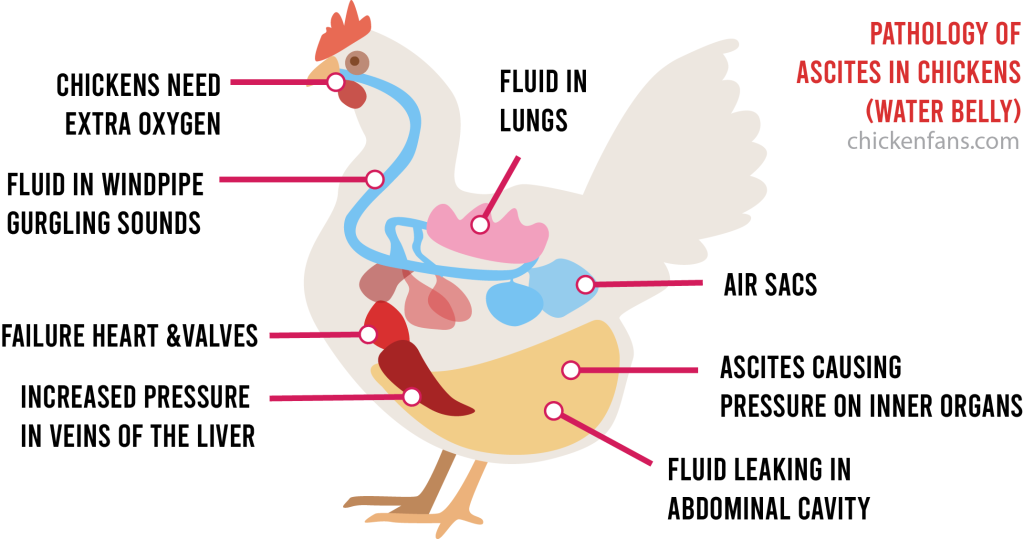
With the heart pumping hard to get the oxygen in the blood to the organs, the pressure in the blood vessels leading from the heart to the lungs is too high. This pulmonary hypertension leads to the thickening of the wall of the heart’s main pumping chamber.
With the heart and valves growing and reshaping, the increased hydrostatic pressure in the veins of the liver causes fluids to leak into the abdominal cavity. This is medically referred to as systemic congestion and ascites. The fluid is rich in proteins and has a yellow shine. It can become a gel when a chicken is chilled before a post-mortem examination.
The fluids can also accumulate in the lungs (pulmonary edema). This can happen when the tiny blood vessels in the lungs, called capillaries, become leaky and allow fluid to seep into the lungs and air sacs. This causes difficulty breathing and gurgling sounds.
Ascites Caused By Aspergillosis
Aspergillosis is a common fungal infection of the chicken’s respiratory tract. Chickens get infected by inhaling spores of Aspergillus fumigatus from contaminated feed and litter.
When Aspergillosis develops in young chicks, it is commonly known as brooder pneumonia. The mold infects the lungs and air sacs of the young chicks.
When chicks recover, some develop chronic respiratory diseases due to deterioration of the respiratory system, leading to ascites [KEL].
Ascites & LPS
Many Gram-negative bacteria like E. coli and Salmonella have an LPS molecule in their outer membrane. LPS is recognized by the chicken’s immune system as a sign of bacterial infection and triggers an immune response, including inflammation.
Studies have now shown that LPS can cause the blood vessels in the lungs of chickens to narrow, leading to pulmonary hypertension and ascites. Exposure to E. coli can increase the occurrence of ascites in chickens by five times. [Chapman, Wideman, et al., Ganapathy]
Unfortunately, bacteria like E. coli and Salmonella are very common in chicken coops and poultry houses. Therefore, biosecurity practices, proper management, and hygiene to limit bacterial contamination are essential in preventing ascites.
Summary
Water belly or ascites syndrome is a serious condition where a chicken’s belly fills with fluid. The fluid puts all organs under pressure and can enter the lungs, causing breathing issues and gurgling sounds.
The condition is difficult to treat, and many chickens never recover. The first aid is to extract build-up fluid in the belly with a syringe, providing instant relief. Next to that, it’s important to control risk factors, such as extreme heat or cold, altitude, feed intake, and contamination.
The underlying issue of water belly is heart failure, triggered by the rapid growth of meat chickens with high oxygen demands. This leads to increased hydrostatic pressure in the veins of the liver, causing fluids to leak into the abdominal cavity.
Related Articles
- The Chicken Respiratory System: a complete overview of all organs in the chicken’s respiratory system that is much more complex than our human lungs
- Gurgling Sounds: other diseases and conditions that can cause your chicken to make gurgling sounds
- Proteins for Chickens: an overview of the protein requirements for all types of chickens in different stages of their life
- Probiotics for Chickens: the essence of probiotics and how they can help control E. coli and Salmonella, risk factors for ascites
- Chicken Coop Size Calculator: a calculator to see how much space you need in the chicken coop and how much space chickens need in general



